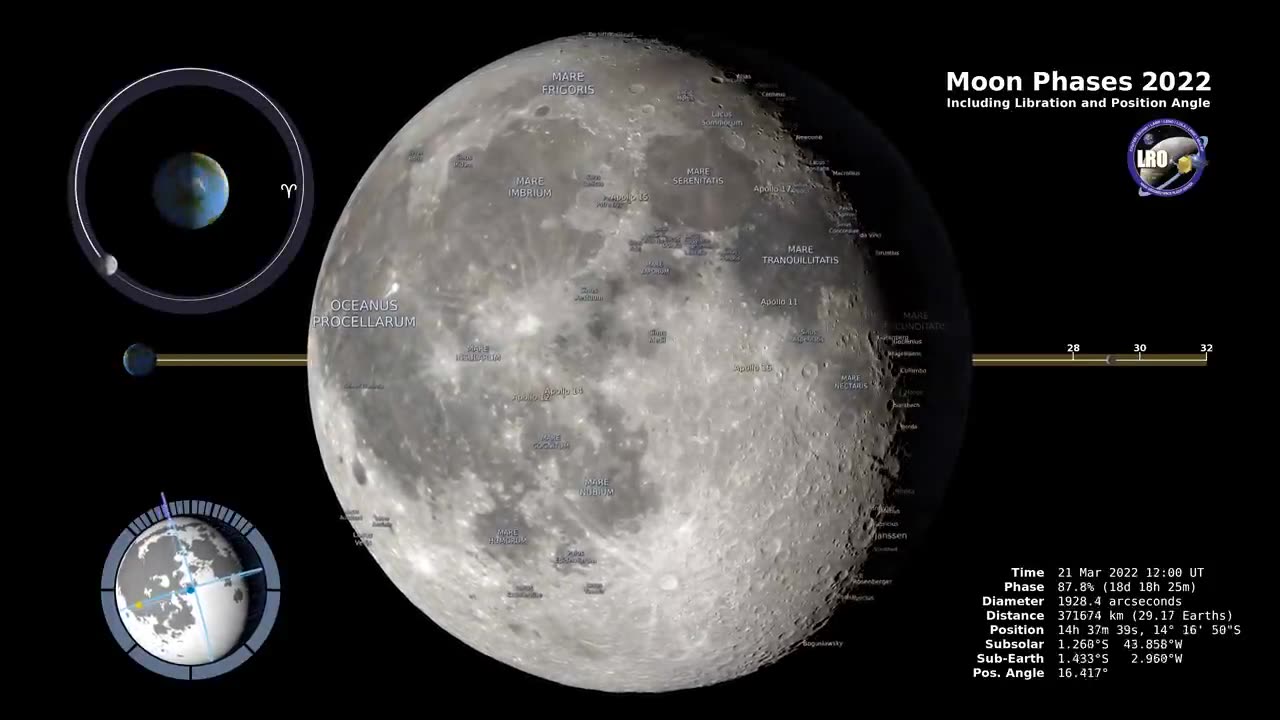Premium Only Content

Moon Phases – Northern Hemisphere
In the Northern Hemisphere, the moon goes through a cycle of phases, transitioning from New Moon to Full Moon and back again. Here are the typical phases of the moon as observed from the Northern Hemisphere:
New Moon: During this phase, the moon is positioned between the Earth and the Sun. The side of the moon illuminated by the Sun is facing away from Earth, making the moon appear mostly dark or completely invisible.
Waxing Crescent: As the moon begins to move away from the New Moon position, a small sliver of its illuminated side becomes visible. This phase is called the waxing crescent.
First Quarter (Half Moon): When the moon has completed about a quarter of its orbit around the Earth, the right half of the moon is illuminated and visible from Earth. This phase is often referred to as the First Quarter or Half Moon.
Waxing Gibbous: The illuminated portion of the moon continues to increase, creating a phase known as the waxing gibbous. During this phase, more than half but not all of the moon is visible.
Full Moon: When the Earth is positioned between the Sun and the moon, the moon appears fully illuminated from our perspective on Earth. This phase is called the Full Moon and is easily recognizable.
Waning Gibbous: After the Full Moon, the moon's illuminated portion begins to decrease. This phase is known as the waning gibbous.
Last Quarter (Half Moon): When the moon has completed about three-quarters of its orbit, the left half of the moon is illuminated, creating the Last Quarter or Half Moon phase.
Waning Crescent: As the moon moves closer to the New Moon position again, only a small sliver of its illuminated side remains visible. This phase is called the waning crescent.
After the waning crescent, the moon returns to the New Moon phase, and the cycle repeats.
It's important to note that the moon's phases are the result of its changing position relative to the Earth and the Sun. The time it takes for the moon to complete one full cycle of phases is approximately 29.5 days, known as a lunar month.
-
 57:38
57:38
The Tom Renz Show
5 hours agoMerry Christmas - The Tom Renz Show Christmas
60.4K10 -
 2:59:10
2:59:10
Wendy Bell Radio
15 hours agoThe Bridge Too Far
136K204 -
 1:03:45
1:03:45
Donald Trump Jr.
1 day agoHappy Festivus: Airing Our Grievances and Stopping The Swamp w/Sean Davis | TRIGGERED Ep.201
410K535 -
 1:30:30
1:30:30
Game On!
18 hours ago $7.48 earnedTop 5 things you need to know for Sports Christmas!
59.3K5 -
 1:58:10
1:58:10
Robert Gouveia
1 day agoMatt Gaetz REJECTS Report, Sues Committee; Luigi Fan Club Arrives; Biden Commutes; Festivus Waste
284K227 -
 1:31:40
1:31:40
Adam Does Movies
1 day ago $15.68 earnedThe Best & Worst Christmas Movies! - LIVE!
112K8 -
 58:10
58:10
Kimberly Guilfoyle
1 day agoAmerica is Back & The Future is Bright: A Year in Review | Ep. 183
198K76 -
 3:03:27
3:03:27
vivafrei
1 day agoEp. 242: Barnes is BACK AGAIN! Trump, Fani, J6, RFK, Chip Roy, USS Liberty AND MORE! Viva & Barnes
270K261 -
 2:05:48
2:05:48
2 MIKES LIVE
11 hours agoTHE MIKE SCHWARTZ SHOW with DR. MICHAEL J SCHWARTZ 12-24-2024
43.1K5 -
 1:14:17
1:14:17
MTNTOUGH Fitness Lab
1 day agoNavy SEAL Dom Raso: The Cold, Hard Truth About Modern Brotherhood | MTNPOD #96
32.6K4